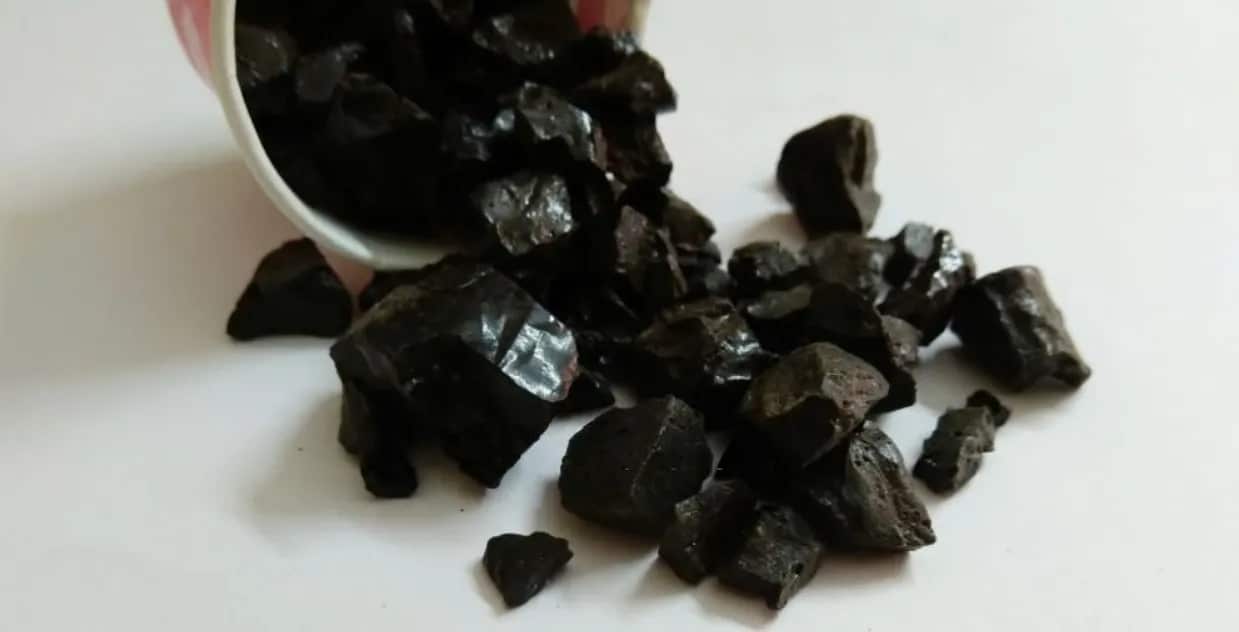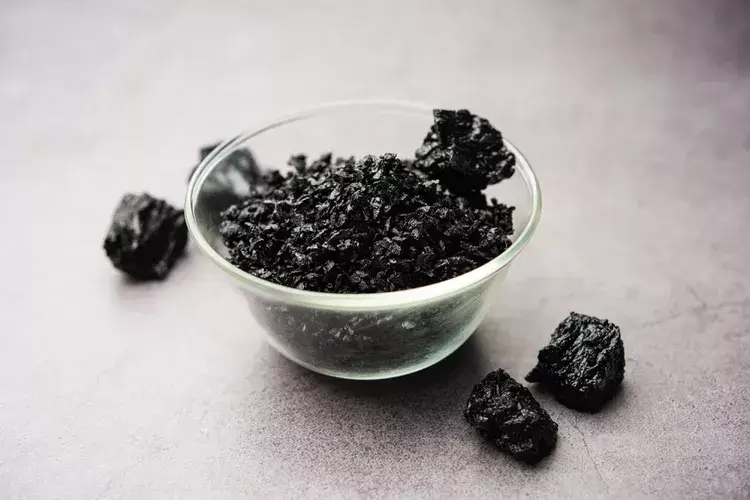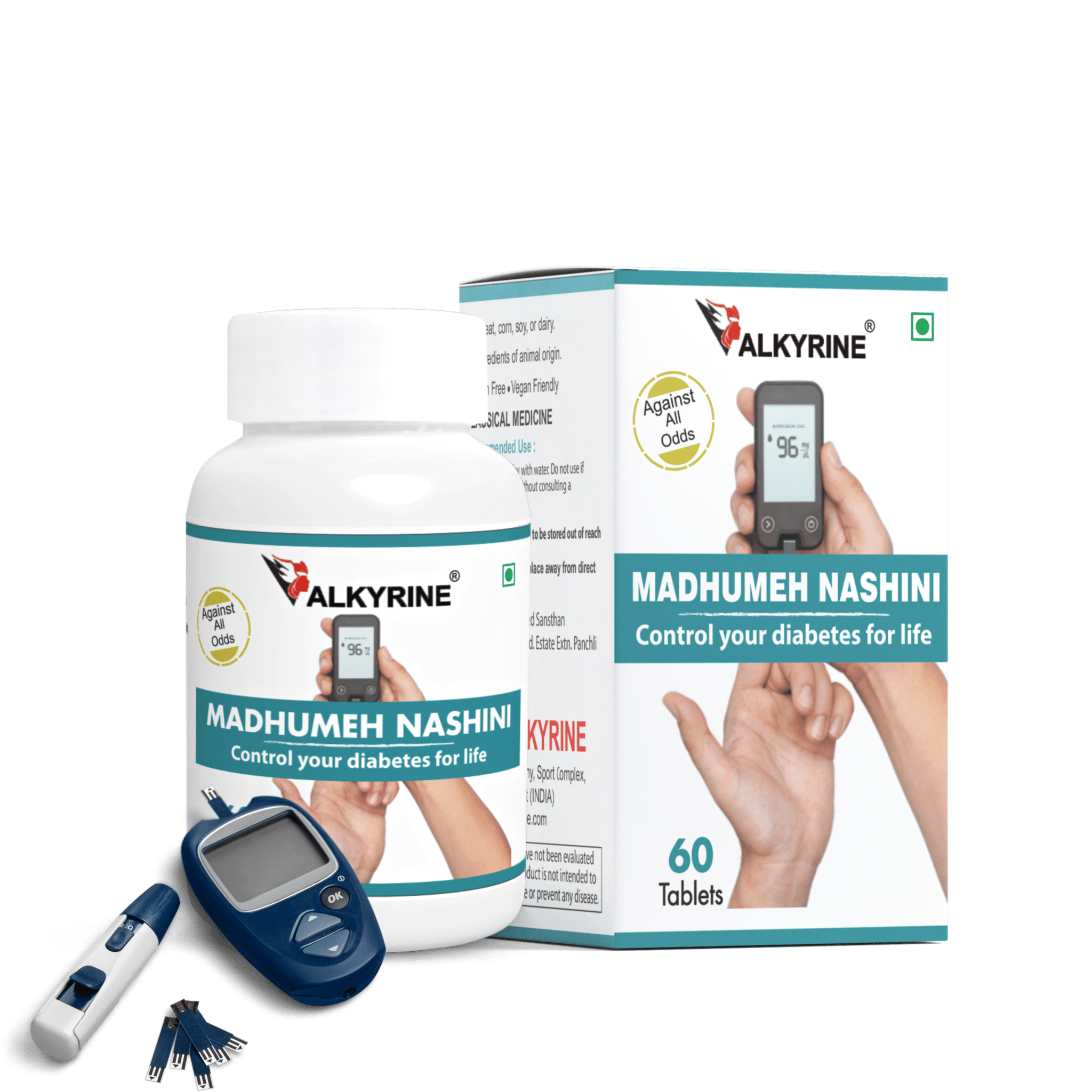Shilajit: Benefits, Uses, Side Effects & More | Valkyrine

Introduction
Shilajit (purified) holds a place of great respect as an Ayurvedic supplement in the indigenous system of Indian medicine. At Valkyrine, we honor this natural marvel for its profound therapeutic value. For centuries, Ayurvedic practitioners have used Shilajit to support various aspects of health. This blackish-brown powder or exudate naturally oozes from high mountain rocks, especially in the Himalayan region between India and Nepal. People have also sourced it from countries like Afghanistan, Tibet, Russia, and northern Chile. In North India, many know Shilajit by names such as shilajatu, salajit, mummiyo, or mimie.
Regarded as one of the most powerful rejuvenators, Shilajit holds a prominent place in the Ayurvedic Materia Medica. Ayurvedic practitioners have consistently used it to manage a wide array of health conditions. Additionally, people believe that Shilajit encapsulates the healing essence of mountains. It consists of organic substances, rock minerals, and rock humus, all of which have been compressed over centuries beneath layers of rock.
Chemical Components:
Humins, humic acid, and fulvic acid naturally compose Shilajit. Among these, fulvic acid is the predominant compound, contributing 60 to 80% of its nutraceutical properties. In addition to this, It also contains fatty acids, resins, albumins, polyphenols, phenolic lipids, triterpenes, sterols, aromatic carboxylic acids, coumarins, latex, gums, and essential amino acids.
Furthermore, researchers have found that Shilajit contains over 84 minerals, including silver, copper, zinc, and iron, which enhance its medicinal value.
Properties of Shilajit
The following properties are generally attributed to:
- People believe it possesses anti-inflammatory activity.
- People know it for its antioxidant capabilities.
- It may enhance memory function.
- It might demonstrate anti-Alzheimer’s properties.
- People think it has a blood sugar-lowering effect.
- It may help alleviate asthma-related symptoms.
- It is associated with anti-tumor properties.
- It might help manage seizures.
- It could promote heart, liver, and kidney health.
- It may support digestive health.
Potential Uses

For Anaemia
It may support the management of iron deficiency anaemia due to its iron content. In an animal study, researchers observed that dietary supplementation with increased hemoglobin levels. Therefore, its regular use might be beneficial for individuals with low iron levels. However, since the findings are limited to animal studies, more extensive human trials are required.
For Muscle Fatigue
When used as a supplement, It links to enhanced exercise performance by improving metabolic factors related to fatigue. Clinical trials have shown that supplementation positively influences muscular strength retention. Still, additional studies are necessary to establish its efficacy for muscle fatigue.
For Heart Health
According to experimental studies, It can help improve the lipid profile and may offer protection against heart muscle damage. In an animal study, It significantly minimized damage to heart tissue. Nevertheless, further human trials must conduct to substantiate these findings.
For High Altitude Adaptation
It might be useful for people travelling to or residing in high-altitude regions. Conditions such as high-altitude pulmonary oedema and acute mountain sickness can be debilitating. Fulvic acid, a key component in It , actively stimulates energy production and supports healthy blood formation. As a result, it may help reduce symptoms such as lethargy and fatigue. However, despite these potential benefits, we strongly recommend consulting a healthcare professional before using Shilajit.
For Gastric Ulcers
Due to its possible antioxidant, anti-inflammatory, and anti-ulcer properties, It may support gastric health. It could serve as a gastroprotective agent against peptic ulcers caused by oxidative stress. Nonetheless, human studies are still insufficient, and further research is essential.
For Alzheimer’s Disease
Fulvic acid in Shilajit may help prevent the aggregation of tau proteins, a known factor in Alzheimer’s disease. In addition, its memory-enhancing potential positions it as a promising candidate for cognitive support. Yet, concrete conclusions await further human trials.
How to Use Shilajit
It is usually available in powder or capsule form. At Valkyrine, we craft our Shilajit-based supplements with the utmost care and purity.
- You can take Shilajit in powder form with milk or as capsules.
- Capsules offer a convenient alternative.
Importantly, you should always consult a qualified Ayurvedic physician before incorporating Shilajit into your wellness routine. Avoid self-medicating.
Side Effects of Shilajit
Although purified Shilajit is generally safe, consuming impure forms can cause serious health risks due to the presence of heavy metals like arsenic, lead, and mercury. In fact, Ayurvedic formulations containing unpurified Shilajit have been directly linked to some cases of lead poisoning.
Therefore, if you experience any unusual symptoms after taking, seek medical attention immediately. At Valkyrine, we ensure that every batch of Shilajit is thoroughly purified and tested for safety, so you can trust its quality and therapeutic potential.
Precautions
- Only purified should be used.
- One should not consume it alongside pigeon meat, horse gram, or black nightshade.
- Pregnant people and breastfeeding individuals should avoid its use due to insufficient safety data.
- Doctors do not recommend for children and older adults without medical supervision.
Drug Interactions
No scientific literature currently confirms specific drug interactions with Shilajit. Nonetheless, it is always safer to consult with a healthcare provider to avoid any potential risks.
Frequently Asked Questions
What is Shilajit?
It is a blackish-brown natural substance that exudes from mountain rocks and is extensively used in Ayurvedic medicine.
What are the health benefits of Shilajit?
Researchers and Ayurvedic practitioners believe that Shilajit supports cognitive, cardiovascular, digestive, and metabolic health due to its anti-inflammatory, antioxidant, and rejuvenating properties.
How should I consume Shilajit?
You can take Shilajit in powder form with milk or as capsules. Consult an Ayurvedic expert to determine the appropriate dosage.
Is Shilajit safe for everyone?
Not necessarily. Pregnant individuals, breastfeeding parents, children, and older adults should avoid it unless prescribed by a doctor.
How can I identify authentic Shilajit?
Authentic Shilajit should burn without smoke and leave a trail when immersed in water. For best results, rely on trusted brands like Valkyrine that guarantee purity.
Conclusion
Shilajit has treasured powerful health benefits for centuries. At Valkyrine, we ensure that only the purest and safest form of Shilajit reaches you, so you can experience its rejuvenating power with confidence. However, as with any supplement, responsible use and medical guidance are essential.
Disclaimer: The information provided here is for educational purposes only and should not replace professional medical advice. Please consult your physician to determine if Shilajit is appropriate for your individual needs.

